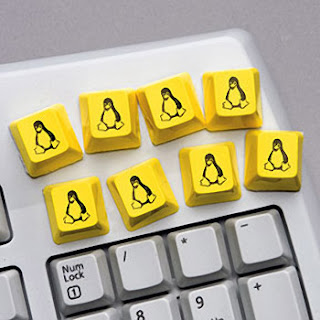 The fastest and most efficient way to navigate your Ubuntu/GNOME desktop is to learn the keyboard shortcuts that are available at your fingertips. With minimum effort, you can run applications, switch between windows or workspaces, take screenshots, and do other essential tasks. So if you want to increase your productivity, you have to know the all-important keys.
The fastest and most efficient way to navigate your Ubuntu/GNOME desktop is to learn the keyboard shortcuts that are available at your fingertips. With minimum effort, you can run applications, switch between windows or workspaces, take screenshots, and do other essential tasks. So if you want to increase your productivity, you have to know the all-important keys.For reference, I kept a comprehensive list of keyboard shortcuts specifically for the GNOME desktop environment. I would like to share this list to everyone, particularly those who are new to Ubuntu or to any other GNOME-based distro.
Now, let your fingers do the walking around your Linux desktop:
Global Keyboard Shortcuts
Alt+F1 - Open the Applications Menu.
Alt+F2 - Display the Run Application dialog.
Print Screen - Take a screenshot of the entire desktop.
Alt+Print Screen - Take a screenshot of the currently focused window.
Ctrl+Alt+Arrow keys - Switch to the workspace to the specified direction of the current workspace.
Ctrl+Alt+D - Minimize all windows and give focus to the desktop.
Alt+Tab - Switch between windows. A list of windows that you can select is displayed. Release the keys to select a window. You can press the Shift key to cycle through the windows in reverse order.
Ctrl+Alt+Tab - Switch the focus between the panels and the desktop. A list of items that you can select is displayed. Release the keys to select an item. You can press the Shift key to cycle through the items in reverse order
Window Keyboard Shortcuts
Alt+Tab - Switch between windows. A list of windows that you can select is displayed. Release the keys to select a window. You can press the Shift key to cycle through the windows in reverse order.
Alt+F4 - Close the currently focused window.
Alt+F5 - Unmaximize the current window, if it is maximized.
Alt+F7 - Move the currently focused window. After pressing this shortcut, you can move the window using either the mouse or the arrow keys. To finish the move, click the mouse or press any key on the keyboard.
Alt+F8 - Resize the currently focused window. After pressing this shortcut, you can resize the window using either the mouse or the arrow keys. To finish the resize, click the mouse or press any key on the keyboard.
Alt+F9 - Minimize the current window.
Alt+F10 - Maximize the current window.
Alt+spacebar - Open the window menu for the currently selected window. The window menu allows you to perform actions on the window, such as minimizing, moving between workspaces, and closing.
Shift+Ctrl+Alt+Arrow keys - Move the current window to another workspace in the specified direction.
Application Keyboard Shortcuts
Ctrl+N - Create a new document or window.
Ctrl+X - Cut the selected text or region and place it on the clipboard.
Ctrl+C - Copy the selected text or region onto the clipboard.
Ctrl+V - Paste the contents of the clipboard.
Ctrl+Z - Undo the last action.
Ctrl+S - Save the current document to disk.
F1 - Load the online help document for the application.
Arrow keys or Tab - Move between controls in the interface or items in a list.
Enter or spacebar - Activate or choose the selected item.
F10 - Activate the left-most menu of the application window.
Shift+F10 - Activate the context menu for the selected item.
Esc - Close a menu without selecting a menu item, or cancel a drag operation
For corrections and/or suggestions, please use the comment section.

Great list, I didn't know
ReplyDeleteShift+Ctrl+Alt+Arrow keys
thanks
I didn't know Ctrl + Alt + D.
ReplyDeletePerhaps here are some you didn't know: http://brainstorm.ubuntu.com/idea/16578/
Alt + Arrow key = back and forward,(ind browser).
ReplyDeleteL+R moues button = Paster last market text.